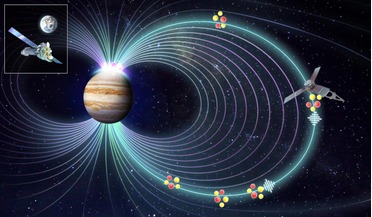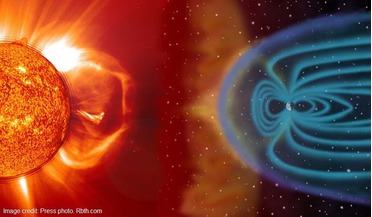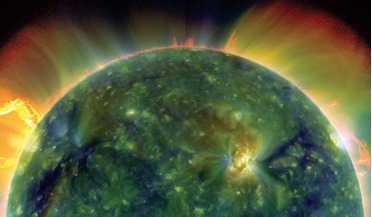 09 July 2021
Astronomers solve 40-year-old mystery of what causes Jupiter’s X-ray auroras
09 July 2021
Astronomers solve 40-year-old mystery of what causes Jupiter’s X-ray auroras
... of Jupiter – is behind the processes driving those emissions. Strangely though, although both Jupiter and Saturn have magnetospheres (the region around a planet dominated by the planet's magnetic field), Jupiter produces bright and energetic X-ray...
 April 2020
Evolutionary lessons for an interplanetary future
April 2020
Evolutionary lessons for an interplanetary future
... exposure as people on Earth, the ISS is still somewhat protected from space radiation by the Earth’s magnetosphere. Mars has no magnetosphere and a very thin atmosphere, so galactic cosmic rays, solar particles, and ultraviolet radiation hit its...
 March 2021
Space weather and risk mitigation
March 2021
Space weather and risk mitigation
... assessment complexity and definition of the hazard scenario. The SMILE aims to form an accurate picture of solar-terrestrial magnetospheric physics. A joint Europe/China project with launch planned for 2023, it will observe the solar wind...
 26 November 2015
Russian research scientist and mathematician recognized for space weather research
26 November 2015
Russian research scientist and mathematician recognized for space weather research
... that allows a tracker device to provide up-to-date information on the current state of the radiation belts in the Earth’s magnetosphere and hence predict its evolution to safeguard satellites from a bombardment of high-energy particles. The team are...
 02 February 2018
Joe Pelton honoured for contribution to space safety
02 February 2018
Joe Pelton honoured for contribution to space safety
...1.5 million kilometres out in space, to mitigate the effects of the Earth’s diminishing natural shielding provided by the Earth’s magnetosphere, preventing a major blast of coronal mass ejected ions from the Sun from destroying the Earth’s electronic...
 July 2014
In thrall to a star: understanding the Sun will help us understand our own climate and environment
July 2014
In thrall to a star: understanding the Sun will help us understand our own climate and environment
...on our ability to understand the fundamental physics at work on the Sun, in the interplanetary medium and in the Earth’s magnetosphere. Enhancing our understanding of this star on our doorstep will increase our ability to predict its future behaviour...